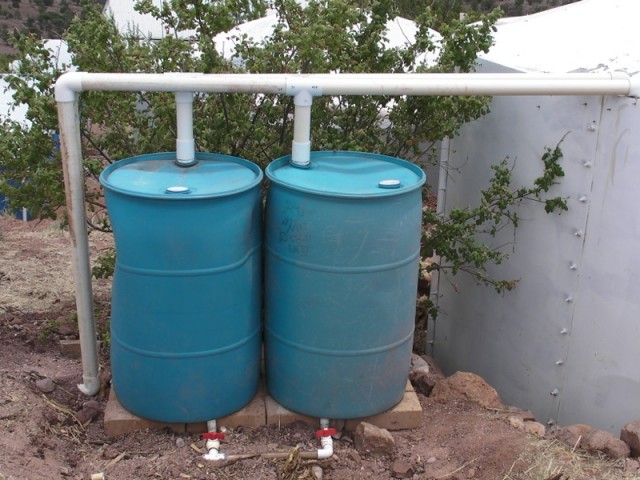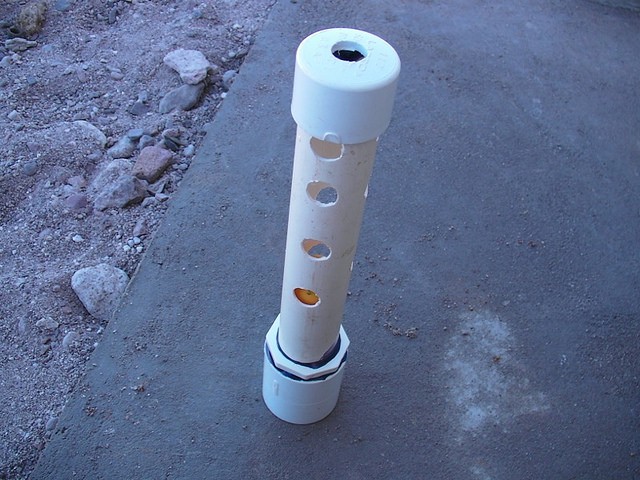
For any of you that aren’t too sure, a First Flush is a pre-filter for rain catchment. The water coming off your roof is often dirty, especially if it hasn’t rained in a while. There can be dust and dirt, bugs, leaves, bird poop, etc. and it all goes into your water cistern.
[flickr_set id=”72157645120158063″]
We have three 7,000 gallon tanks that are hooked up to the house roof. The first in line is the one that gets dirtiest, as it collects all the crud from the roof. The second and third seem to stay almost spotless. How we’ve been handling the situation up until now is two-fold: 1) We have a pretty complex filtration system within the house for all water usage, especially drinking. 2) We clean out the tanks as needed (so far we haven’t had to do number two or three). So, although it’s not a drastic problem, it does cause extra work and extra money (as you go through filters faster).

The first flush however should go a long way towards solving the problem.
- There are two pipes (one for each side of the exit gutters) that go from the house to the first cistern. We cut these pipes close to the tank.
- We then made a brick pad for two 50 gallon barrels to sit on.
- The pipes from the gutters now make a T over each barrel and then continue on to the tank.
- When it rains, the barrels fill up with the dirtiest of the water. Inside the barrels is a pipe with a ping-pong ball in it (it’s a little more complicated than that, but I’ll do a proper how-to at a later stage). As the water in the barrel rises, so does the ping-pong ball, until it blocks off the pipe into the barrel. At that point, the water coming off the roof (which should now, 100 gallons later, be coming off a lot cleaner) flows over the down-spout into the barrels and into the tank instead.
- Each barrel then has an outlet at its bottom, with a valve that you can turn on and off. If it rains again soon and the roof is still clean, no need to do anything. However, if it doesn’t rain right away and the roof gets dirty again, release the water that’s in the barrels (on a garden or something), so that they can catch the dirty water again.
Since we installed it, we haven’t had much more than a drizzle, but the rains should be coming soon and we will report back on its success or failure.

Submit a Comment